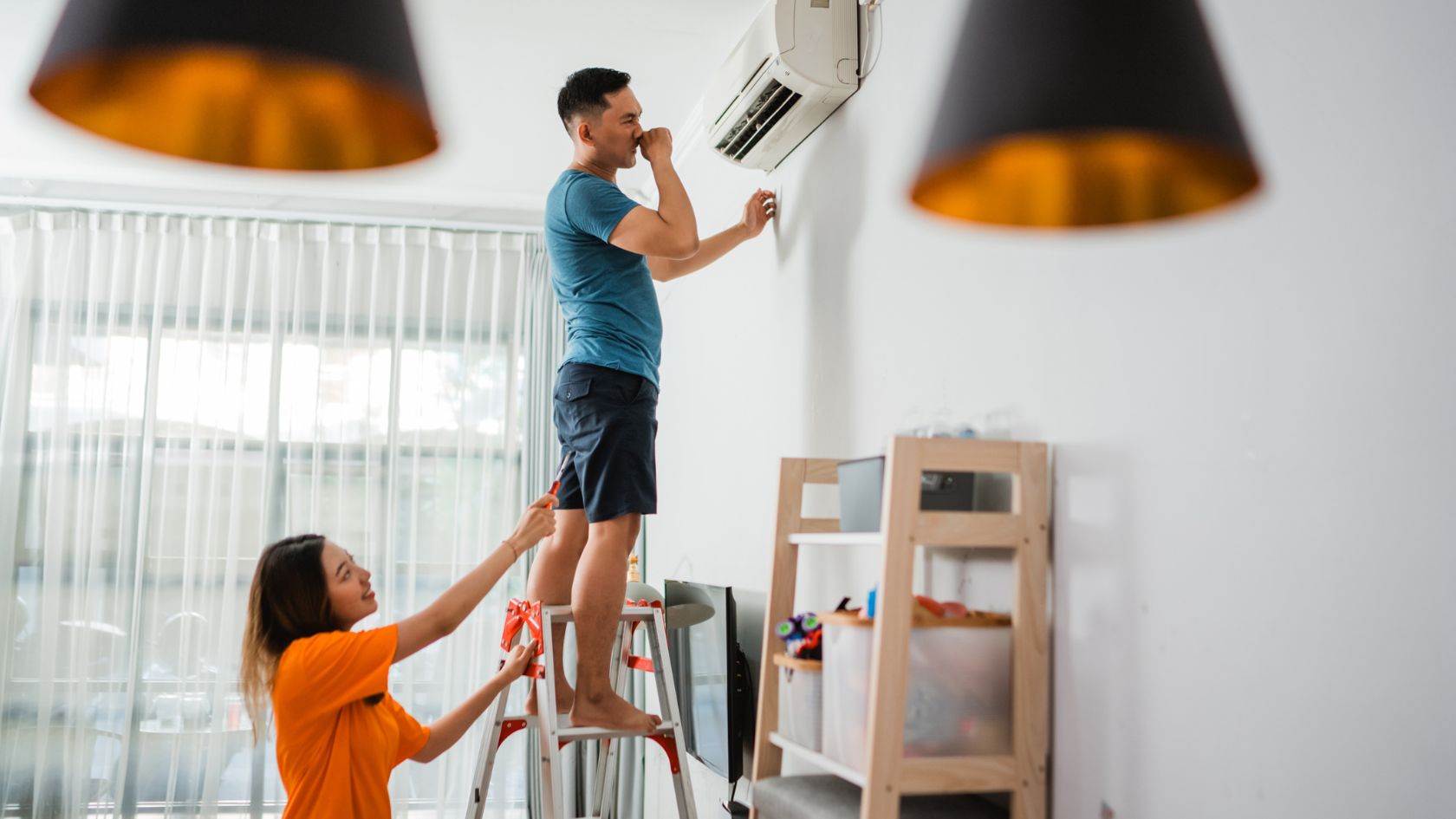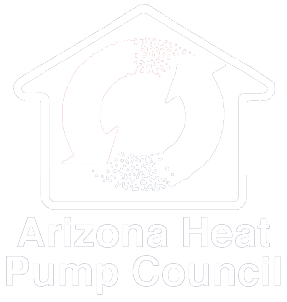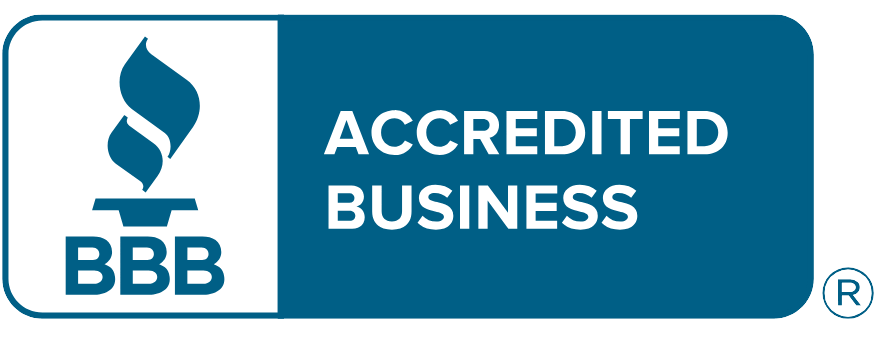Regular AC maintenance can save you thousands in repairs by preventing costly breakdowns and extending your system’s lifespan. By implementing a routine maintenance schedule, you’ll enhance energy efficiency, reduce utility bills, and improve indoor air quality. Simple tasks like changing filters, cleaning coils, and inspecting electrical connections can prevent major issues. Annual professional tune-ups help identify potential problems early, avoiding expensive emergency repairs. You’ll also enjoy better cooling performance and reduced wear on components. With proper care, your AC system can last 15-20 years, compared to just 7-10 years for neglected units. Uncover how a small investment in maintenance can lead to significant long-term savings.
Key Takeaways
- Regular maintenance prevents costly breakdowns and extends the lifespan of AC systems by 15-20 years.
- Annual professional tune-ups identify and resolve minor issues before they become expensive repairs.
- Routine cleaning and filter replacement improve energy efficiency, reducing utility bills by up to 15%.
- Proactive care minimizes the risk of emergency repairs during peak usage, avoiding high-cost service calls.
- Consistent maintenance enhances indoor air quality, potentially reducing health-related expenses from poor air quality.
The Cost of Neglect
Putting off regular AC maintenance can set you up for a hefty price tag down the road. The cost implications of neglect are far-reaching, often resulting in more frequent and expensive repairs. As your system deteriorates due to lack of upkeep, you’ll likely face increased emergency expenses and a noticeable performance decline.
Many homeowners fall prey to maintenance myths, believing that their AC units can run efficiently without regular check-ups. This misconception leads to severe neglect consequences, including reduced energy efficiency, shortened equipment lifespan, and compromised indoor air quality. Your AC system’s components, such as filters, coils, and condensate drains, require periodic cleaning and inspection to function effectively.
Understanding your homeowner responsibilities is essential in avoiding the pitfalls of neglect. By investing in routine maintenance, you’ll not only prevent major breakdowns but also guarantee your system operates at peak efficiency. This proactive approach can save you thousands in repair costs over your AC unit’s lifetime. Remember, the small expense of regular maintenance pales in comparison to the potential financial burden of system failure or replacement due to prolonged neglect.
Preventive Care Basics
To protect your AC investment, start with routine cleaning and inspection of key components. Implement a consistent filter replacement schedule, typically every 1-3 months, to maintain airflow and efficiency. Schedule professional tune-ups annually to address potential issues early, optimize performance, and extend your system’s lifespan.
Routine Cleaning and Inspection
Every year, as the summer heat approaches, routine cleaning and inspection of your AC system should top your home maintenance checklist. The routine cleaning benefits are numerous, including improved energy efficiency, better air quality, and prolonged system lifespan. Start by cleaning or replacing air filters monthly, as clogged filters force your AC to work harder, increasing energy consumption and wear on components.
Inspection importance can’t be overstated. Regularly examine your outdoor unit for debris, leaves, or grass clippings that can obstruct airflow. Clean the condenser coils annually to guarantee maximum heat transfer. Inside, check the evaporator coils for dust buildup and clean them if necessary. Inspect the condensate drain line for clogs, which can lead to water damage and mold growth.
Don’t forget to examine electrical connections for signs of wear or corrosion. Tighten loose connections to prevent system failures and potential safety hazards. Lubricate moving parts like fan motors and bearings to reduce friction and energy consumption. By performing these routine cleaning and inspection tasks, you’ll maintain your AC’s efficiency, prevent unexpected breakdowns, and guarantee your home remains a safe, comfortable environment throughout the sweltering summer months.
Filter Replacement Schedule
Consistently replacing your AC filters is a cornerstone of effective preventive maintenance. It’s essential to understand the different filter types and their replacement frequency to guarantee peak system performance and air quality. Most residential AC units use disposable fiberglass or pleated filters, while some high-end systems may employ washable or electrostatic filters.
For standard disposable filters, you should replace them every 30 to 90 days, depending on factors like household size, pets, and local air quality. If you have allergies or respiratory issues, more frequent changes are advisable. High-efficiency filters (MERV 11-13) typically require replacement every 60 to 90 days, while basic fiberglass filters (MERV 1-4) should be changed monthly.
Set notifications on your phone or mark your calendar to stay on top of your filter replacement schedule. Always keep spare filters on hand to avoid delays in changing them. When replacing, verify the filter is correctly oriented and fits snugly to prevent air bypass. By adhering to a proper filter replacement schedule, you’ll maintain system efficiency, reduce energy costs, and extend your AC’s lifespan.
Professional Tune-Up Benefits
Professional AC tune-ups offer a multitude of benefits that extend beyond simple maintenance. The tune-up significance lies in its ability to prevent costly breakdowns and extend your system’s lifespan. During these sessions, certified technicians employ their knowledge to thoroughly inspect, clean, and adjust your AC unit’s components.
A professional tune-up includes checking refrigerant levels, calibrating thermostats, and testing electrical connections. Technicians also clean or replace air filters, lubricate moving parts, and guarantee proper airflow. This all-encompassing approach helps identify potential issues before they escalate into major problems, saving you from unexpected repairs and system failures.
The technician knowledge involved in these tune-ups is vital. They’re trained to spot early signs of wear and tear, allowing for timely interventions that prevent safety hazards and maintain peak performance. Regular tune-ups also improve your AC’s energy efficiency, leading to lower utility bills and reduced environmental impact.
Energy Efficiency Boost
Regular AC maintenance greatly improves your system’s energy efficiency, leading to lower energy bills and improved cooling performance. You’ll experience more consistent temperatures throughout your home while consuming less electricity. This reduction in energy usage also minimizes your environmental impact, contributing to a more sustainable household.
Lower Energy Bills
Through routine AC maintenance, you’ll experience a significant increase in energy efficiency, leading to lower monthly utility bills. Regular servicing guarantees your system operates at peak performance, reducing energy consumption and minimizing wastage. As your AC runs more efficiently, it requires less power to cool your home, directly translating to cost savings on your energy bills.
Maintenance tasks such as cleaning or replacing filters, lubricating moving parts, and checking refrigerant levels all contribute to improved efficiency. A well-maintained system can use up to 15% less energy compared to a neglected one. This reduction in energy consumption not only benefits your wallet but also reduces your carbon footprint.
Additionally, routine maintenance helps identify and address minor issues before they escalate into major problems. By preventing unexpected breakdowns, you avoid the need for emergency repairs, which can be costly and disruptive. The cumulative effect of these efficiency improvements and preventive measures results in substantial long-term savings on your energy bills. Regular AC maintenance is a proactive approach to guaranteeing both the longevity of your system and the stability of your household budget.
Improved Cooling Performance
Maintaining your AC system doesn’t just save you money; it greatly enhances your unit’s cooling performance. Regular maintenance guarantees that your system operates at peak efficiency, maximizing its cooling capacity. When you keep your AC in top condition, you’ll notice improved temperature consistency throughout your home, eliminating hot spots and maintaining comfort in every room.
A well-maintained AC system can cool your space more quickly and effectively. Clean filters, coils, and fans allow for better airflow, reducing strain on the system and improving its ability to remove heat and humidity from your home. This enhanced performance means you won’t need to run your AC as long or as hard to achieve desired temperatures, further contributing to energy savings.
Additionally, regular maintenance helps prevent sudden breakdowns during extreme weather, guaranteeing your safety and comfort when you need it most. By addressing minor issues before they escalate, you’re protecting yourself from potentially dangerous situations caused by AC failure during heatwaves. Ultimately, a properly maintained AC system provides reliable, efficient cooling performance, creating a safer and more comfortable living environment for you and your family.
Reduced Environmental Impact
The environmental footprint of your AC system shrinks considerably with proper maintenance. Regular upkeep guarantees your unit operates at peak efficiency, consuming less energy and reducing greenhouse gas emissions. By maintaining ideal performance, you’ll minimize the need for refrigerant recharges, which can lead to harmful leaks of ozone-depleting substances.
Properly maintained systems often use sustainable refrigerants more effectively, reducing the overall environmental impact. You’ll also extend the lifespan of your AC unit, decreasing the frequency of replacements and the associated manufacturing and disposal processes. This aligns with eco-friendly practices by reducing waste and conserving resources.
Regular filter changes and coil cleanings improve air quality, reducing the strain on your system and lowering energy consumption. By implementing a maintenance schedule, you’ll guarantee that all components function efficiently, preventing unnecessary energy waste. Additionally, well-maintained units are more likely to adapt to newer, more environmentally friendly technologies as they become available. This proactive approach not only saves you money but also contributes to a more sustainable future by reducing your carbon footprint and promoting responsible energy use.
Extending System Lifespan
Regular maintenance is the key to extending your AC system’s lifespan. By adhering to a consistent maintenance schedule, you’re not only guaranteeing peak performance but also safeguarding your investment. Routine inspections and tune-ups can identify potential issues before they escalate, preventing costly breakdowns and premature system failure.
Your AC system operates under significant stress, especially during peak seasons. Regular maintenance reduces this strain, allowing components to function efficiently and last longer. This proactive approach enables you to plan for system upgrades and take advantage of technology advancements when the time comes, rather than being forced into emergency replacements.
Maintenance tasks such as cleaning or replacing filters, lubricating moving parts, and checking refrigerant levels all contribute to system longevity. These actions prevent unnecessary wear and tear, maintain energy efficiency, and guarantee safe operation. By extending your AC’s lifespan through regular maintenance, you’re not only saving money but also guaranteeing a reliable and safe cooling system for your home or business. Remember, a well-maintained AC system can last 15-20 years, while neglected units may fail in half that time.
Improved Air Quality
Along with cost savings and extended system life, regular AC maintenance greatly improves your indoor air quality. When you maintain your AC system, you’re actively reducing airborne pollutants and indoor allergens that can accumulate in your ductwork and circulate throughout your home. Proper maintenance enhances ventilation efficiency, guaranteeing that fresh air is consistently distributed and stale air is effectively removed.
A well-maintained AC system also provides superior humidity control, which is vital for preventing mold growth and maintaining ideal comfort levels. Regular cleaning and filter changes improve air circulation, reducing the concentration of harmful particles in your indoor environment. System cleanliness is paramount, as a clean AC unit operates more efficiently and doesn’t harbor or spread contaminants.
The health benefits of improved air quality are significant. You’ll experience fewer respiratory issues, reduced allergy symptoms, and better overall well-being. By investing in regular AC maintenance, you’re not just saving money on repairs; you’re creating a safer, healthier living space for you and your family. Prioritize your AC system’s upkeep to guarantee consistent, high-quality air throughout your home.
Avoiding Emergency Breakdowns
Regular AC maintenance greatly reduces the risk of unexpected system failures during peak summer months. By scheduling routine check-ups, you’ll benefit from early detection of potential issues, preventing them from escalating into major breakdowns. This proactive approach not only minimizes stress associated with sudden AC malfunctions but also considerably lowers the costs of emergency repairs and replacements.
Preventing Mid-Summer System Failures
Three critical steps can help you prevent mid-summer AC failures and avoid emergency breakdowns. First, schedule a professional inspection before peak season to guarantee your system’s efficiency and address potential issues. Second, implement a regular maintenance routine, including filter changes and coil cleaning. Third, monitor your system’s performance and address any unusual sounds or temperature fluctuations promptly.
To maximize your heat wave preparedness and system efficiency, consider these additional measures:
| Action | Benefit | Frequency |
| Clear debris | Improves airflow | Monthly |
| Check refrigerant | Secures ideal cooling | Annually |
| Inspect ductwork | Prevents air leaks | Bi-annually |
Early Problem Detection Benefits
Early problem detection’s benefits extend far beyond mere convenience. By adopting a proactive approach to AC maintenance, you’re safeguarding your system against potential catastrophic failures. Regular inspections allow technicians to identify and address minor issues before they escalate into major, costly repairs. This early detection greatly reduces the likelihood of unexpected breakdowns during peak usage periods, ensuring your comfort and safety during extreme weather conditions.
Moreover, early problem detection enhances your AC system’s efficiency and longevity. When small issues are promptly addressed, your unit operates at peak performance levels, consuming less energy and maintaining consistent temperatures throughout your home. This proactive stance not only saves you money on utility bills but also extends the overall lifespan of your AC system.
Reduced Stress, Lower Costs
A significant advantage of consistent AC maintenance is the dramatic reduction in stress and costs associated with emergency breakdowns. By prioritizing regular upkeep, you’re effectively implementing a stress management strategy for your home’s cooling system. Emergency AC failures often occur during peak summer months when temperatures soar, leaving you vulnerable to discomfort and potential health risks.
Regular maintenance allows you to address minor issues before they escalate into major problems, preventing unexpected breakdowns that can disrupt your daily life and budget. This proactive approach aligns with sound financial planning principles, as you can budget for routine maintenance rather than facing sudden, expensive repair bills.
Moreover, well-maintained AC systems operate more efficiently, consuming less energy and reducing your utility costs. This efficiency translates to long-term savings and a reduced carbon footprint. By avoiding emergency breakdowns, you also sidestep the additional expenses associated with after-hours service calls and rush repairs. Ultimately, consistent AC maintenance provides peace of mind, knowing that your system is less likely to fail when you need it most, safeguarding your comfort and financial stability.
Professional Vs DIY Maintenance
When it comes to AC maintenance, homeowners often face the dilemma of choosing between professional services and do-it-yourself approaches. Both options have their merits, but it’s vital to understand the differences regarding effectiveness, safety, and long-term savings.
| Aspect | DIY Techniques | Professional Knowledge |
| Skill Levels | Basic to intermediate | Advanced |
| Time Investment | Higher | Lower |
| Equipment Needs | Limited | Extensive |
DIY maintenance can be cost-effective for simple tasks like filter changes and basic cleaning. However, it’s important to recognize your limitations. Professional technicians possess the knowledge and tools to perform thorough inspections, identify potential issues, and execute complex repairs safely.
Consider the maintenance frequency when deciding between DIY and professional AC services. While you can handle monthly filter replacements, it’s advisable to schedule professional check-ups at least annually. This approach balances cost-effectiveness with expert care.
Be aware of repair risks associated with DIY attempts. Improper handling can lead to further damage or safety hazards. If you’re unsure about a procedure or lack the necessary equipment, it’s best to consult a professional. Remember, your safety and the longevity of your AC system should always be the priority.
Seasonal Maintenance Checklist
Maintaining your AC system throughout the year isn’t a one-size-fits-all approach. Your seasonal maintenance checklist should adapt to the changing demands on your system. In spring, focus on cleaning or replacing air filters, checking refrigerant levels, and inspecting the condensate drain line. Summer requires vigilance in monitoring system performance and energy efficiency. Fall is ideal for a thorough inspection, including thermostat calibration and ductwork examination.
Don’t fall for maintenance myths that suggest you can skip seasonal adjustments. Each season presents unique challenges to your AC system, and neglecting these can lead to costly repairs. In winter, protect outdoor units from debris and ice buildup, and consider a professional inspection to confirm your system is ready for the upcoming cooling season.
Year-round, keep the area around your outdoor unit clear of vegetation and debris. Regularly clean or replace air filters, typically every 1-3 months. Listen for unusual noises and monitor your energy bills for sudden increases, which may indicate system inefficiencies. By following this seasonal maintenance checklist, you’ll enhance your AC’s longevity, improve its efficiency, and greatly reduce the risk of unexpected breakdowns.
Long-Term Financial Benefits
Investing in regular AC maintenance yields substantial long-term financial benefits that extend far beyond the immediate cost savings. By prioritizing preventive care, you’re making a strategic investment in your HVAC system’s longevity and efficiency. This proactive approach allows for better budget planning, as you can anticipate and allocate resources for routine maintenance rather than facing unexpected, costly repairs.
The long-term financial advantages of regular AC maintenance include:
- Reduced energy bills due to improved system efficiency
- Extended lifespan of your HVAC equipment, delaying the need for expensive replacements
- Minimized risk of catastrophic failures that could lead to emergency repair costs
Regular maintenance enhances your AC system’s investment value, ensuring it operates at peak performance for years to come. By addressing minor issues before they escalate, you’ll avoid the financial strain of major repairs or premature system replacement. This approach also contributes to a safer home environment by preventing potential hazards associated with neglected HVAC systems, such as electrical problems or refrigerant leaks. Ultimately, the consistent care of your AC system translates to significant cost savings and peace of mind over time.
Common AC Problems Prevented
Regular AC maintenance prevents a multitude of common problems that can lead to costly repairs or system failures. By scheduling routine check-ups, you’ll avoid issues like thermostat malfunctions, which can cause your system to cycle improperly or fail to maintain desired temperatures. Technicians will detect and fix refrigerant leaks early, preventing compressor damage and ensuring ideal cooling efficiency.
Electrical failures, often stemming from loose connections or worn components, can be identified and rectified before they escalate. Drain blockages, a frequent cause of water damage and mold growth, are cleared during maintenance visits. Regular inspections also catch potential compressor problems, saving you from expensive replacements.
Maintenance addresses airflow restrictions by cleaning or replacing filters and clearing debris from outdoor units. Sensor malfunctions, which can lead to inaccurate temperature readings, are calibrated or replaced as needed. Technicians will seal duct leaks, improving energy efficiency and indoor air quality. They’ll also investigate and resolve noise disturbances, often indicative of underlying issues. Finally, capacitor failures, which can prevent your AC from starting, are identified and replaced proactively, ensuring uninterrupted operation during peak seasons.
Frequently Asked Questions
How Often Should I Change My AC Filter?
You should replace your AC filter every 30-90 days, depending on filter type and usage. Disposable fiberglass filters need monthly replacement, while pleated filters can last up to 3 months. Regular filter replacement guarantees peak system performance and air quality.
What’s the Ideal Temperature Setting for Energy Efficiency?
“Cool as a cucumber” isn’t your goal. For ideal energy conservation, set your thermostat to 78°F (26°C) when you’re home. This temperature balances comfort and efficiency, minimizing your AC’s workload and reducing its energy impact. Adjust as needed for safety.
Can I Use My AC During Thunderstorms?
You can use your AC during thunderstorms, but it’s safer to turn it off. Lightning strikes can cause power surges, potentially damaging your system. Install a surge protector for added safety if you must keep it running.
How Do I Know if My AC Refrigerant Needs Recharging?
You’ll notice reduced AC performance if your refrigerant needs recharging. Look for weak airflow, insufficient cooling, and ice on coils. A refrigerant leak might be present. For safety, always have a professional technician diagnose and recharge your system.
Are Smart Thermostats Worth the Investment for AC Efficiency?
Worried about upfront costs? Don’t be. Smart thermostats are worth the investment, offering significant energy savings and AC efficiency. You’ll benefit from precise temperature control, scheduling options, and remote access. These features guarantee comfort while optimizing your system’s performance safely.
Conclusion
Regular AC maintenance isn’t just a chore—it’s your shield against costly repairs and inefficiency. By embracing preventive care, you’re not only optimizing performance but also safeguarding your investment. Remember, a well-maintained system is a long-lasting one. As you implement these strategies, you’ll find your AC becoming a paragon of efficiency, quietly humming along while keeping your home comfortable and your wallet intact. Don’t wait for breakdowns; contact us now to secure your cooling future.






